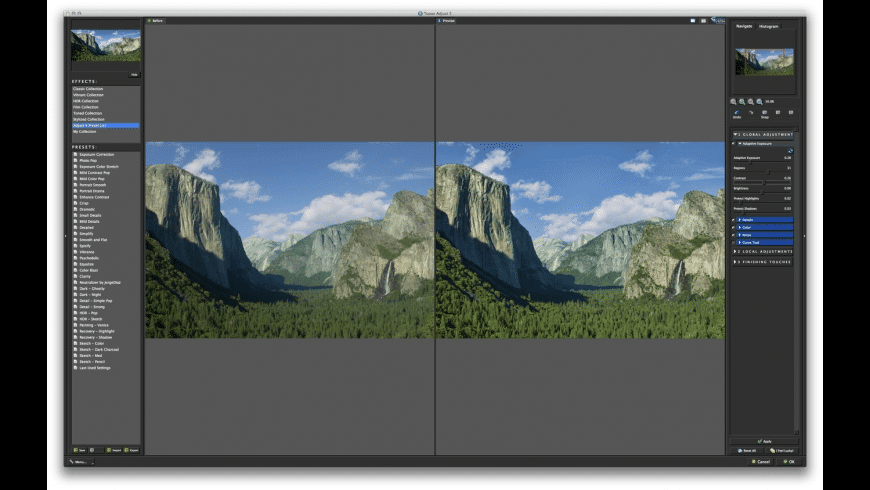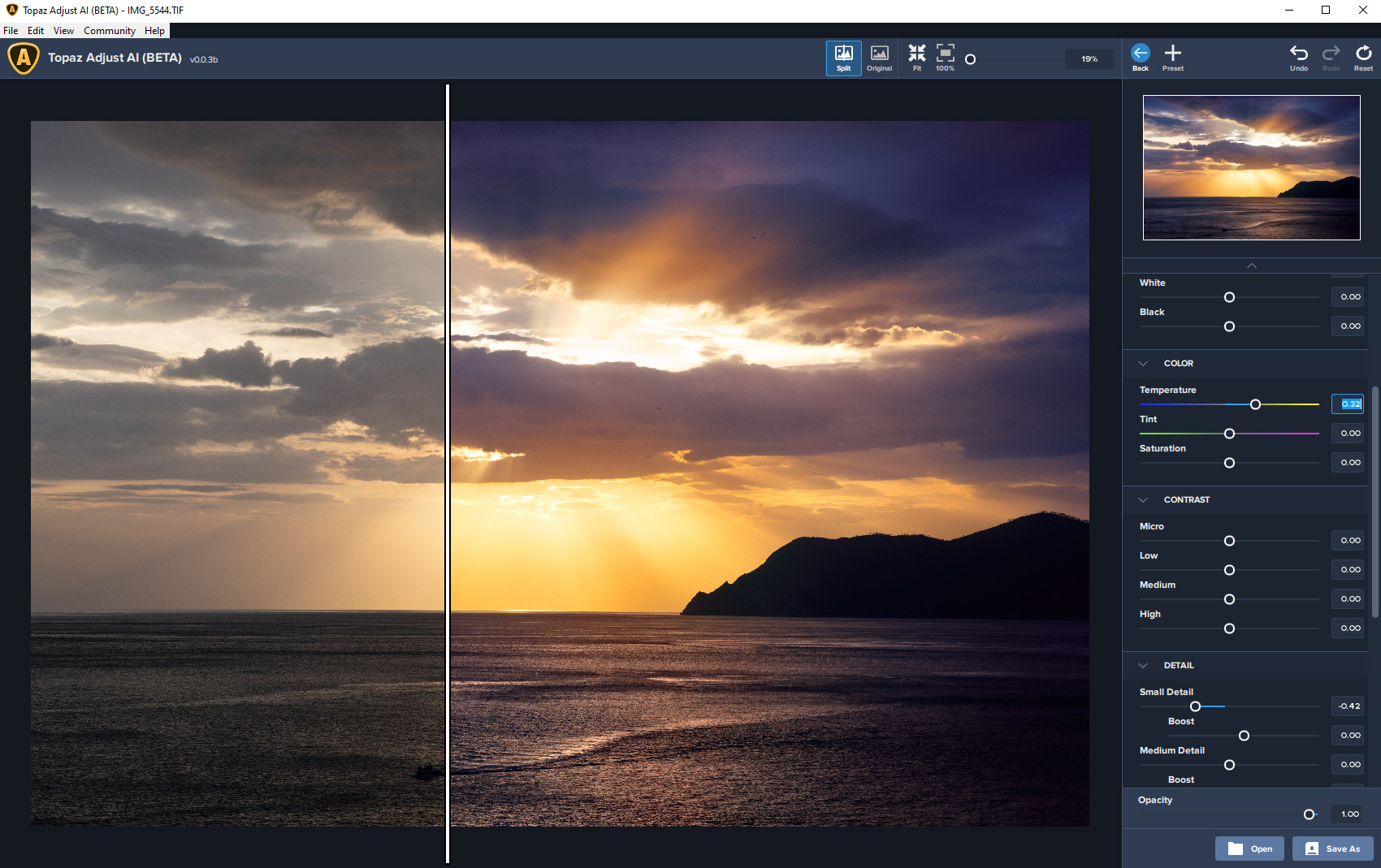

These photographs were a great opportunity to see what Topaz Labs’ Sharpen AI could for them to inch their image quality a little closer to my ideal so I tried some different settings and the results are not bad.

I’ve shot plenty of such scenes with my ageing Panasonic Lumix Micro Four Thirds cameras but low ISOs and loads of richly-detailed image data is not their strong point in the way that it is for Fujifilm’s larger APS-C sensor format.
#Topaz adjust ai tiff iso
Imagine if I’d have been able to combine high megapixels with low ISO and slow shutter speed, small aperture and tilting or better yet fully-articulated LCD monitor in the three café-life images above. We need IBIS in the X-Pro4 and all future Fujifilm cameras just like it has been an essential in Panasonic’s larger and smaller sensor cameras for years now.

That aside, rangefinder and rangefinder-style cameras remain my first choice for discrete and immersive documentary photography where DSLR-style cameras would draw undue attention and macho-man protests that “real photographers” don’t need stabilized cameras cuts no ice with me.
#Topaz adjust ai tiff professional
So I chose to wait for the X-H2’s eventual appearance with the hope that its tech would be future-proofed for much, much longer.įujifilm X-H1 with VPB-XH1 battery grip and Fujinon XF 16-55mm f/2.8 R LM WR professional zoom lens. Hardware needs to have a long useful lifespan when money is tight and the X-H1’s technology was about to be out of date by the time the camera appeared in this country. The amazing deals available overseas during the X-H1’s discontinuation that bundled camera with vertical battery grip and choice of red badge professional zooms weren’t to be seen here so I didn’t bite the bullet and buy one. My time with the Fujifilm X-H1 loaner camera was a revelation of what in-body image stabilization can bring to shooting documentary in available light and darkness with wide lenses at slow shutter speeds and with a tilting LCD monitor. Documentary demands IBIS so please include it in the X-Pro4, Fujifilm The 21mm-equivalent XF 14mm f/2.8 R is terrific for relating foreground figures to background figures, far left to far right, and all the elements of an environment to the people within it without the too-tight image cropping that narrower focal lengths often impose on us if we can’t step back far enough. Narrower focal lengths like 28mm-equivalent 18mm and 35mm-equivalent 23mm often demand leaving out more image information than I’d like with little to no background space left around the central figures. The XF 14mm f/2.8 may not be the lens for all seasons that Fujifilm’s recently released XF 18mm f/1.4 and 23mm f/1.4 R LM WR “Fujilux” primes might be, but the lens’ width is wonderful for opening up cramped places and for placing figures within well-designed image spaces. I’ve been thoroughly enjoying carrying the Fujinon XF 14mm f/2.8 R prime lens as my default lens mounted on our Fujifilm X-Pro2 digital rangefinder camera, and using the combination every day is improving my understanding of what this incredibly well optically-corrected lens is capable of. The current La Niña weather pattern has kept us indoors more often than we’d like, which equates to photographing in available light that amounts more to available darkness. We’re still waiting for our COVID-19 booster shots thanks to the Australian federal government’s various incompetences so are limited to making new photographs in reasonably safe settings such as cafés and outdoors in our local suburbs. Information is crucial in documentary photography and photojournalismĭocumentary and photojournalistic images rely on plenty of well-chosen and well-depicted data, or information, of the subjects and their settings and blur has little to no value given bokeh is the opposite of data. I had hoped DeNoise AI might also be of use in processing raw files from Fujifilm and Panasonic Lumix cameras but with DxO recently adding X-Trans support to DxO PhotoLab 5 and DxO FilmPack 6 I’ve happily been applying DxO’s excellent DeepPRIME demosaicing and denoising function to all my raw files regardless of which camera produced them. I’ve yet to work out the optimal settings and workflow combinations of the three Topaz Labs products but have most often been using Gigapixel AI to blow up undersized JPEGs and then use Sharpen AI on the exported TIFF files before reducing them down to fit Unititled.Net‘s standard image sizes. Photographed with Fujifilm X-Pro2 and Fujinon XF 14mm f/2.8 R then the raw file processed with Topaz Labs Sharpen AI with exported DNG file further processed in Adobe Camera Raw and Adobe Photoshop.


 0 kommentar(er)
0 kommentar(er)
